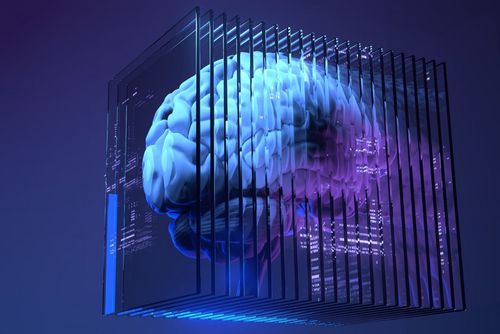Neuroscience and artificial intelligence (AI) are two closely related fields. On the one hand, the functioning of the brain inspires the architecture of artificial neural networks and machine learning techniques, especially deep learning.
AI research teams are working to better understand and reproduce aspects of human cognition, such as neuroplasticity, the brain’s ability to adapt to and process new information.
This is particularly true for University of Montreal professors Yoshua Bengio (Department of Computer Science and Operations Research) and Guillaume Lajoie (Department of Mathematics and Statistics). Both researchers at Mila – the Quebec Institute of Artificial Intelligence – are studying ways to design AI systems that integrate advanced human cognitive functions: perception, memory, learning, flexibility, decision-making, language, etc.
On the other hand, these large AI models are used to model, simulate and understand brain processes. These computer models help neuroscientific researchers formulate and test hypotheses about how the brain works.
For example, thanks to computer modeling, the team of Eilif Muller, professor at the Department of Neuroscience at UdeM and researcher at IVADO – the Institute for Research and Transfer in the Field of Artificial Intelligence – managed to obtain a vision of more complete synaptic changes in the neocortex. A breakthrough that sheds light on the brain’s learning mechanisms.
Specific applications

Yoshua Bengio, Guillaume Lajoie and Eilif Muller
Photo credits: Yoshua Bengio (Amélie Philibert, University of Montreal), Guillaume Lajoie (Maryse Boyce) and Eilif Muller (Mila)
If artificial intelligence and neuroscience influence each other in several ways, a new discipline has emerged from this interaction: NeuroAI.
Using biological principles to design computer systems, researchers in this interdisciplinary research area work to improve understanding of human intelligence and develop more efficient and targeted technologies.
Specifically, this can lead to the creation of brain-machine interfaces, i.e. devices that use AI to allow human neural networks to communicate with a computer and vice versa.
In this context, Guillaume Lajoie and his colleagues Marco Bonizzato, Marina Martinez and Numa Dancause (all professors in the Department of Neuroscience at UdeM) recently found a way to improve the functioning of intelligent neuroprostheses that allow the recovery of motor skills after injury. on the spinal cord or a stroke.
Understanding the brain… and its disorders
NeuroAI is also giving rise to computational psychiatry, a new field of psychiatry that uses digital tools based on large amounts of data, particularly from brain imaging, to better understand psychiatric and neurological disorders.
Researchers Mila Guillaume Dumas (Department of Psychiatry and Addictionology at UdeM) and Karim Jerbi (Department of Psychology at UdeM) are both interested. Karim Jerbi, for example, uses magnetoencephalography – a method that records the brain’s electromagnetic activity – to elucidate the role of neuronal oscillations in brain functions and disorders.
“Digital tools and data make it possible to be at the forefront of the prevention, detection and treatment of mental disorders,” explains Guillaume Dumas.
Montreal, turnstile
This article shows this: Montreal, thanks in particular to the ecosystem created by the University of Montreal, Mila and IVADO, is a thriving place for these dynamic research sectors with exceptional potential.
In addition, Mila recently hosted a workshop that brought together experts from Montreal and abroad to present the latest work in the field of NeuroAI.
“There are few places in the world with such a high concentration of advanced expertise in artificial intelligence, neuroscience and the interface between the two. This meeting is unique,” enthuses Guillaume Lajoie.

